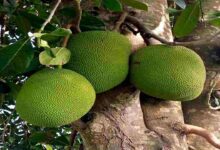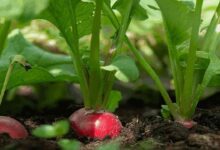Strawberry cultivation: Use these guidelines to help you produce strawberries
Strawberry cultivation: The genus Fragaria × ananassa, which encompasses more than 20 species of blooming plants in the Rosaceae family of roses, is where these lovely and tasty fruits originate. Not your typical fruit, strawberries are sweet, juicy, and bursting with antioxidants and vitamins. Their hues, which range from rich pinks to vivid reds, entice our senses of sight and taste.

Choosing a Location and Getting Ready for a Strawberry Nursery
The success of your strawberry harvest depends on the location of your strawberry nursery. Choose a spot with plenty of sunshine since strawberries need at least 6 to 8 hours of direct sun every day to grow well. Ensure enough ventilation to stave off illnesses and encourage robust development. In order to avoid waterlogging, which may lead to root rot in strawberry plants, well-draining soil is essential.
Before planting, do a soil test to determine the pH and nutrient content of the soil and make any required amendments. Steer clear of areas with standing water or floods. To ensure that your young strawberry plants are in a clean, weed-free environment, clear the area of any trash and weeds. Consider raised beds if your soil is low quality or has drainage problems. Organize your nursery beds so they are easily accessible and maintained.
Selecting the Optimal Strawberries for Your Area
The success of your nursery may be greatly increased by choosing the greatest variety, since different types flourish in different settings. Popular strawberry kinds include Seascape, which has exceptional disease resistance; Chandler, which is well-liked for its high yields; Sweet Charlie, which is highly valued for its sweetness; and Albion, which is renowned for its big and tasty berries.
Every variety has distinct qualities that accommodate varying tastes and cultivation environments. Everbearing strawberries, such as Quinault or Tribute, are great options for cooler climates since they yield fruit all year round. June-bearing varieties, like Festival or Camarosa, do very well in warmer areas at certain times of the year.
Nursery bed preparation for strawberry planting
First, choose a location with enough of sunshine and soil that drains well. Before continuing, remove any weeds or rubbish from the area. To enhance aeration and loosen the soil, cultivate it next. The addition of organic matter may aid in nutrient enrichment of the soil for the development of healthy plants. To find out whether any particular amendments are required depending on the needs of your Strawberry variety, think about doing a soil test.
In a strawberry greenhouse, a gardener
Make raised beds to avoid waterlogging and sufficient drainage, both of which may be harmful to strawberry plants. Drip irrigation systems may also lower the risk of illness by maintaining ideal moisture levels without over-wetting the plant. Mulch the prepared nursery beds to help the soil retain moisture.
Testing Soil and Making Amendments
To ensure maximum development and abundant harvests, it is essential that your strawberry nursery has the proper soil composition. You may learn more about your soil’s pH levels, nutritional shortages, and general health by doing an extensive soil test. You may create the ideal growth environment for your strawberry plants by making targeted amendments based on your knowledge of what your soil requires.
Incorporate necessary nutrients like N, P, and K (nitrogen, phosphorous, and potassium) to promote healthy plant growth based on the test findings. Overfertilization should be avoided since it might stunt plant development. Throughout the growing season, make sure your strawberries have all they need to flourish by testing and amending your soil on a regular basis.
Beginning Strawberry Plants using Runners or Seeds
You may see these delectable fruits’ growth and development from the very beginning thanks to this fascinating method. Selecting premium seeds and providing the right circumstances for germination are crucial when beginning from seeds. Since seedlings need time to establish themselves before being moved into nursery beds, patience is essential.
Starting from runners, on the other hand, entails choosing robustly growing, healthy mother plants. Replant the runners in nursery beds that have been prepared so they may grow robust root systems after carefully removing the runners. For both strategies to be established successfully, close attention to detail and ongoing supervision are necessary. Taking care of your strawberry plants from the beginning, whether you choose to use seeds or runners, will provide the groundwork for a plentiful crop later on.
Methods for Planting Strawberry Runners and Seedlings
Make sure the soil is rich in organic matter and well-draining before beginning any preparations. For the best drainage and air circulation around the plants, create raised beds or rows. To provide enough space for development and convenient harvesting, plant your runners or seedlings at the proper spacing. Take the plants out of their pots slowly so as not to damage the roots too much. Please plant them at a depth where the tops of the soil are level with their crowns in pre-dug holes.
Give freshly planted strawberries plenty of water to support the development of robust root systems. Mulching the area around the strawberry plants may aid in moisture retention, weed control, and temperature regulation. Keep a regular eye out for any indications of pests or illnesses in your strawberry patch and take quick action if anything goes wrong.
Strawberry Nurseries’ Irrigation Systems and Water Management
Strawberries need a constant moisture content without becoming soggy. Since drip irrigation hydrates plant roots and lowers the danger of fungal infections, it is often used. To modify watering schedules appropriately, it is important to conduct routine monitoring of soil moisture levels. The local climate and patterns of rainfall should be taken into account when planning an irrigation system for your nursery. Utilizing water resources effectively helps plants and supports sustainable agricultural methods.
Techniques for Fertilizing Healthy Strawberry Plants
Certain nutrients are necessary for strawberry plants to flourish and provide an abundance of fruit. Start by testing the soil in your nursery beds to determine the nutrient levels in order to guarantee optimum development. After that, you may adjust the soil by adding organic matter or fertilizers that are balanced and specifically designed to fulfill the needs of strawberry plants.
Make appropriate adjustments to your fertilization program based on the various phases of development. For optimum fruit production, use fertilizers high in phosphorus during blooming and high in nitrogen early in the season to encourage robust leaf growth. Recall that overfertilizing may result in leaf burn or excessive vegetative growth that prevents the plant from bearing fruit. A plentiful harvest of tasty and nutrient-dense strawberries may be achieved by routinely checking the health of the plants and making necessary modifications.
Mulching and Weed Management in Nursery Beds
Mulching controls soil temperature, inhibits weed development, and helps keep the soil wet. Organic mulches that decompose over time and nourish the soil with nutrients, such as pine needles or straw, are beneficial to strawberry plants. Additionally, these organic compounds prevent weeds from growing, lessening their competition for resources.
In order to keep undesirable plants from depriving your strawberry crop of nutrition and sunshine, weed management is crucial. Without endangering your fragile strawberry plants, you may prevent weeds by hand-weeding or by utilizing mulch barriers. Your strawberries will have the greatest chance of succeeding if you keep an eye out for any indications of invasive weeds in your nursery beds and remove them as soon as possible.
Controlling Pests and Diseases
Controlling diseases and pests is crucial to the wellbeing of your strawberry plants. Strawberry-related pests include slugs, spider mites, and aphids. Keep an eye out for any indications of infestation and act quickly to avoid more harm. Additionally, diseases like root rot, gray mold, and powdery mildew might endanger your strawberry harvest. The main defense against the spread of these infections is good cleaning procedures and regular inspections. To successfully reduce outbreaks, think about using permitted insecticides or organic techniques.
Reducing the likelihood of pest and disease problems may be achieved by using sound cultural practices, such as maintaining enough air circulation, space between plants, and refraining from overhead watering. To identify issues early on, keep a regular eye out for any anomalies or changes in your plants’ development. The entire output of your nursery might be reduced by pests and illnesses if you remain proactive and mindful of the demands of your strawberry plants.
Sustaining Temperature Levels
The best temperature range for strawberries is 15–26°C during the day and a little bit lower at night. High temperatures that are sustained over time may stress the plants and hinder the growth of fruit. In order to avoid heat damage, it is essential to provide sufficient shade during the hot summer months. Sustaining the ideal humidity levels is essential for the development of strawberries.
Humidity levels between 80 and 90 percent are optimum, particularly as the plants begin to blossom and bear fruit. Elevated relative humidity facilitates pollination and keeps the fruit from drying out. Accurately monitoring these variables may be facilitated by purchasing instruments such as thermometers and hygrometers. For your strawberries to grow, you may create a steady atmosphere by modifying your heating or cooling systems appropriately.
Strawberry Plant Pruning and Training
Pruning: Removing old leaves and runners encourages the plant to concentrate its efforts on producing high-quality fruit. To encourage healthy development, cut away any afflicted or unhealthy sections. Training the strawberry plants entails directing their growth to optimize ventilation and sunshine. Soft ties may be used to secure the stems once they have been gently bent toward open areas.
You may lessen pests and illnesses and avoid overpopulation by giving your plants the right training. Pruning and training your strawberry plants effectively requires routinely checking for any indications of overgrowth or tangling. Recall that abundant harvests are more likely to come from a plant that is well-maintained.
How to Gather and Preserve Strawberry Runners
Make sure the fruits are completely matured before selecting them for maximum sweetness and taste. To prevent harming the fragile berries, handling must be done carefully. When the strawberries are mature, gently remove them from the plant, leaving a tiny amount of stem intact, using sharp scissors or pruning shears. This lessens the chance of bruising during storage and moisture loss, extending their shelf life.
As soon as you pick your strawberries, keep them in a cool spot to preserve their freshness. It is best to keep them refrigerated, but be careful not to wash them until you are ready to consume them or use them in dishes, since too much moisture might cause mold to grow. If you want to extend the shelf life of your strawberries, freeze them or use other techniques to preserve them, such as drying or creating jam. You may continue to enjoy cultivated strawberries far beyond their prime with these techniques.
Strawberry Plant Marketing and Packaging
You want people to see and take notice of your goods as it stands out on the shelf. Think of utilizing transparent packaging so the bright red color of the strawberries is highlighted. Using eco-friendly products may help draw in customers who care about the environment. Emphasize any distinctive qualities of your strawberries, such as their organic cultivation or local origin. To stand out in a competitive market, use imaginative branding and labeling for your strawberry plants.
To expand your marketing reach, make use of regional farmers markets and social networking sites. Share images, recipes, and gardening advice pertaining to your strawberry plants with your internet audience. Seek for possible collaborations with grocery shops or restaurants to expand the reach of your goods. Without sacrificing quality, networking within the sector may lead to new distribution and sales channels.
Maintaining Tracking the Health and Growth
Crucial duties in nursery management include keeping thorough records and keeping an eye on the development and well-being of your strawberry plants. From planting until harvesting, you may follow each plant’s development by keeping thorough notes. This data assists you in spotting problems early on and implementing changes to guarantee the healthiest possible plant growth. Making educated decisions during the growing season is made possible by keeping track of important information such as planting dates, fertilizer regimens, irrigation levels, pest and disease incidences, and growth trends.
One way to evaluate the general health of your nursery stock is to measure and visually observe plant development on a regular basis. Employing technological tools such as spreadsheets or specialized software may expedite record-keeping procedures and provide significant insights into patterns over an extended period. You may enhance growing methods and increase yields in your strawberry nursery by evaluating this data.
Strategies for Seasonal Maintenance
You must modify your care regimen for Strawberry Nurseries as the seasons change. It’s essential to keep your plants safe from frost throughout the winter. If it becomes really cold outside, think about protecting them with straws or row covers. Healthy development in the spring may be encouraged by pruning in the late autumn. When it becomes warmer again, remove any damaged leaves and runners to promote the growth of new shoots. In the winter, when plants are dormant, it is crucial to monitor the moisture content of the soil.
Mulching may act as insulation and shield plants from freezing temperatures when applied around the base of a strawberry plant. For this, natural materials like pine needles or straw are excellent. By putting these seasonal maintenance techniques into practice, you can make sure that your strawberry nursery stays healthy and prepared for an abundant harvest come spring. Recall that cultivating strawberries may be a fulfilling endeavor that fosters a connection with nature in addition to providing fresh fruits.

